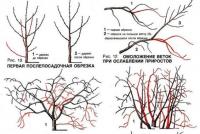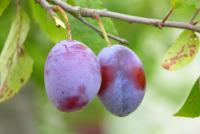Flowering shrubs to give in Siberia. Choosing decorative bushes for landscape design
You should know some important details about the placement of various species. Let's start with the trees.
Trees
Before picking up trees for landscaping the space around the fence, you must first learn some subtleties of planting:
- To prevent the fence from being damaged by the roots, it is important to consider distance between it and the tree. The optimal distance is about 3 or 5 meters. Consider not only the actual size of the tree, but also its estimated size of the crown and root system in the future.
- Calculate in advance shaded area near the fence and trees. Consider which plants can be planted nearby.
Attention! Rule 1 must be observed necessarily. Otherwise, a tree with time can damage the fence with its root system.
As a rule, our compatriots traditionally plant near fences fruit trees, for example, apple trees. But to decorate this area, there have long been special varieties of trees. Here they are:
Due to the trees it is possible to increase the height of the fence. Make it simple - we plant trees in a row. As soon as the crowns are in contact, they begin to cut regularly. The best way to process linden and elm. The first one will also delight you with an unforgettable aroma during the flowering period.
It is important to take into account the purpose of the tree near the fence. For example, you can completely close your area from prying eyes. And you can just want to give the fence more decorative look. About what trees can be planted for different purposes, it will be a little later. And what kind of shrubs suitable for planting?
Shrubs for places near the fence
Shrubs planted here have a lot of advantages:
- Transformation is not very aesthetic fencing.
- Air enrichment with oxygen.
- Purification of air from dirt and dust, if the site is located along the roads.
- Ease of care.
Derain . The shrub is completely unpretentious and is the favorite of many gardeners. Its motley leaves transform any plot and fence. Derain grows well in any territory, including in Siberia. In the summer it is decorated with flowers, and in the fall - white fruits. Perfectly gives in to formation by a hairstyle.
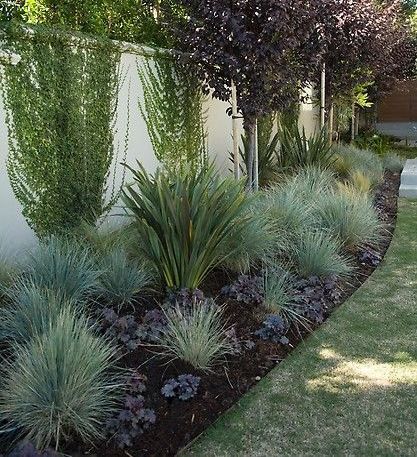
What tall flowers can be planted along the hedge
We have already talked about bushes and trees. And what flowers are planted along the fence?
One of the most popular options is rudbeckia (known as the golden ball). The name is not accidental, because the inflorescences of this plant are like a ball. Bright yellow flowers will decorate any fence.
Malva perennial. The simple plant in leaving, capable to decorate any place. It is easily propagated and does not require special care. It blooms almost until October in warm weather.
Sunflower. This flower is able to grow in height up to one and a half meters! Its sunny view can hide any, even the most unattractive fence. Sunflower is also useful - seeds and other parts of the plant are widely used in herbal treatments. Loves good watering.
Decorative bows can look great.
Mixborders along the fence: the principle of construction, photos, ready-made schemes
Recently widely used for landscaping the entire plot, and not just places along the fences. Mixborder - are several different plants that bloom at the same time and create an amazing riot of colors.
Here are a few schemes that allow you to create very beautiful combinations of plants:

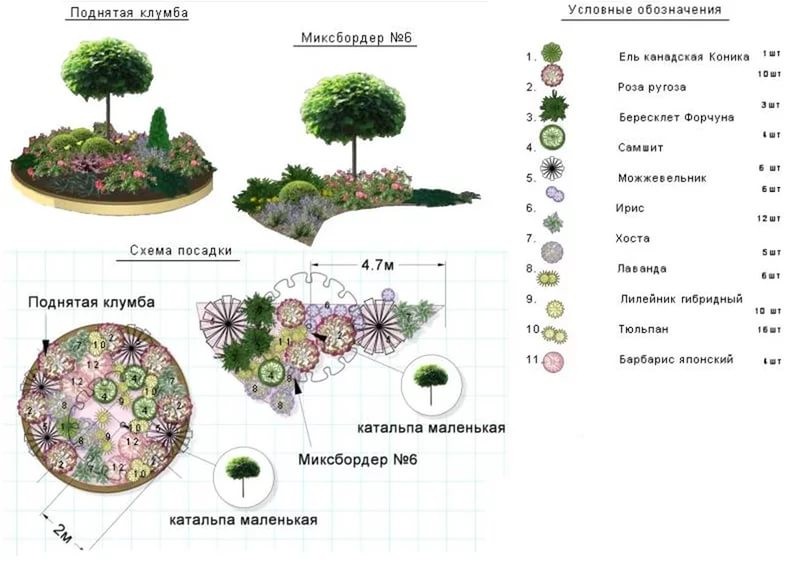

Do not forget that the composition can not be planted plants that grow quickly. They "slaughter" their neighbors. All flowers and shrubs must have similar needs for soil, water and fertilizer.
A selection of tracks along the fence in the photo:
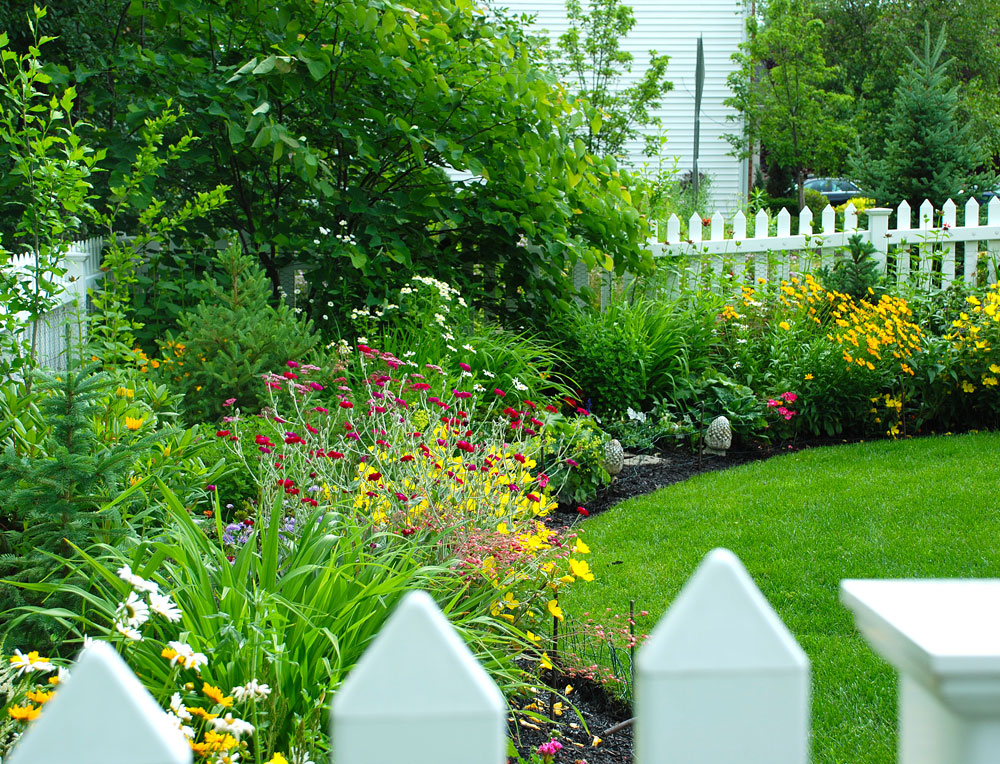
![]()
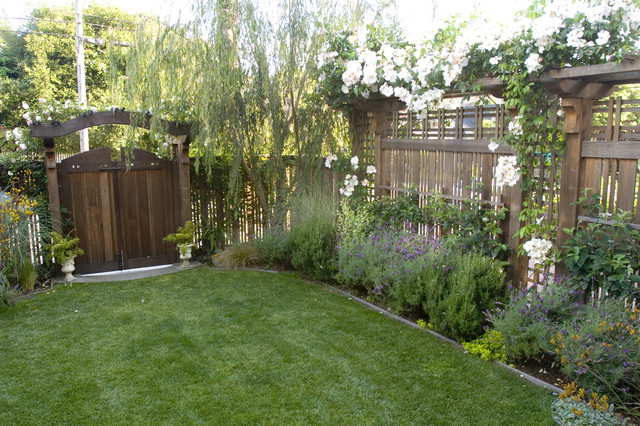
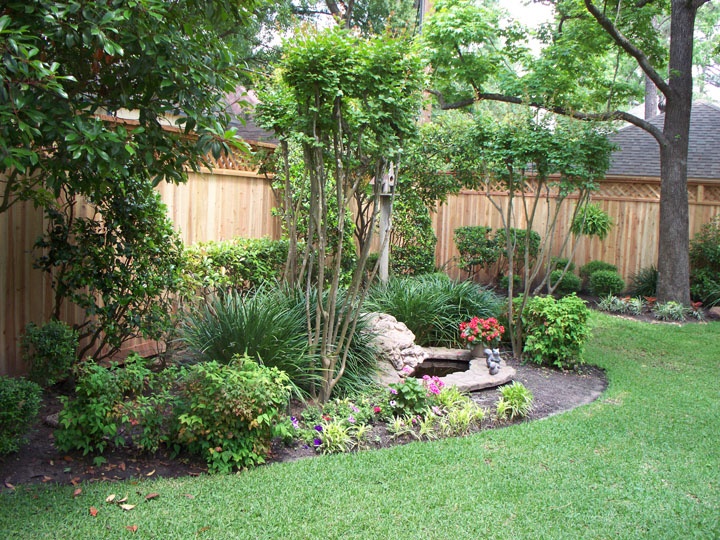



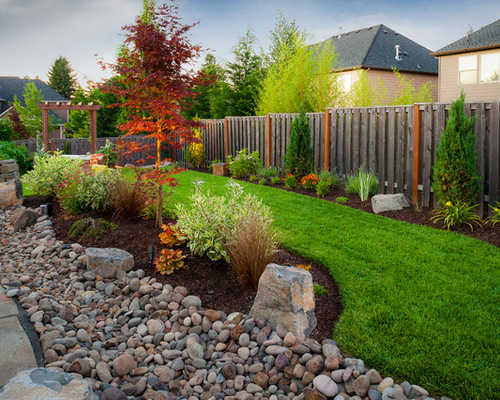
When selecting plants for the garden you need to be based on several criteria. It is desirable that the trees and shrubs were unpretentious - because you are not going to pay all your free time to care for them, the gardener has enough other troubles. But the running site should not be. Therefore, the question of which plants to plant in the garden, is on the agenda quite acutely.
What plants should be in the garden: the main criteria
It is necessary to decide which plants should be in the garden, only after the functional zoning has been carried out, an interesting version of the garden design has been invented, paths are correctly planned, the borders of lawns, paved grounds and flower gardens are marked. After this work, you can do the design of planting trees and large shrubs. In order not to overload the garden and choose the right plants to plant in the garden, you need to recall the ratio of open and closed spaces of 2: 1. That is, that the area of open space (lawn, gravel, water and flower compositions, something that is below the level of human eyes) should be 2 times larger than the area occupied by trees and high tree-shrub compositions.
The main criteria for choosing which trees to plant in the garden are as follows:
- crown shape and plant habit, height and diameter of an adult plant;
- leaf color, including their autumn color, do not overload the garden with purple, yellow or variegated foliage;
- deciding which plants to decorate the garden with, determine whether you need and in fruits;
- leaf shape, plants with unusual leaves, use where they can be approached closer;
- color and texture of trunks and shoots.
What plants to plant in the mini-garden
For a small garden, the problem of choice is particularly acute. What plants are suitable for a mini-garden - a burning issue for owners of small areas. It is better to prefer those trees and large shrubs that are good. all year roundespecially changing from month to month. In such a situation, you should not plant, for example, lilac - the shape of the bush is good for very few varieties, of course, lilac is incredibly good in May, but it blooms only for two weeks, and then only a background of green leaves. Unlike lilac, shadberry for a small garden is a very suitable plant, it is good both during the blooming of the leaves, and during flowering, and in the summer with berries, and in the fall - with a fantastic foliage color.


Look at the photo, what trees are better to plant in the garden in a small area, and do not forget that the plants look good from a distance three times its height.
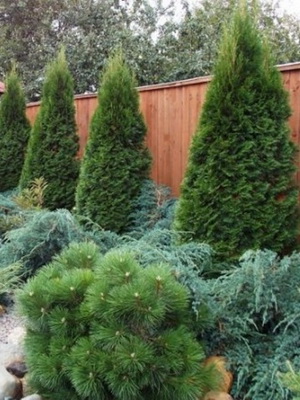

As skeletal plants, it is good to use the species trees of your area, these are resistant plants, not prone to disease, frosting, etc., they will fit the garden into the surrounding nature. Often these are large plants, but they have graceful varietiesthat will "fit" in small garden. Do not give up on those trees and shrubs that come from places far from Russia, but they feel great in the middle lane.
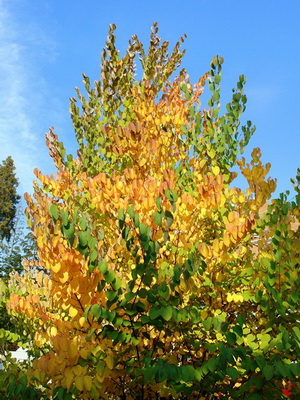
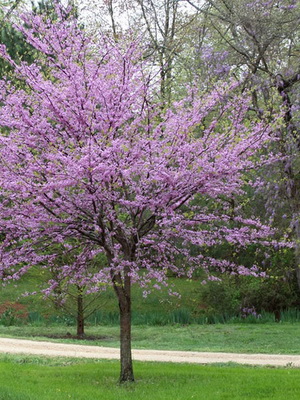
Here is an example of what kind of shrub can be planted in the garden: Japanese purple, a tree 6-8 m high with beautiful rounded leaves - pink-purple when blooming, blue-green with whitish inside with reddish veins in summer, golden-yellow and crimson in autumn.
What coniferous plants to decorate the garden
Without conifers, the winter garden would be completely empty, and in summer they create a pleasant contrast with deciduous treesdecorating the plot. Many weakly resistant conifers are now on sale, for example, Eastern thuja, black pine, all cypress trees, except pea, single-colored and Canadian fir.
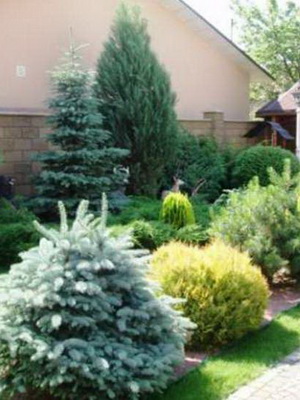
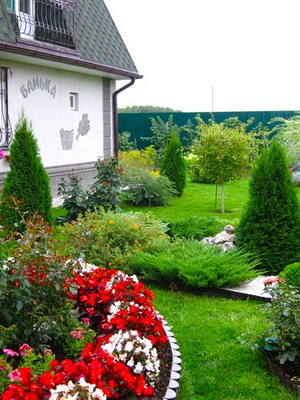
Closed space conditions in a small area often allow more heat-loving plants to be grown, but they should not be regarded as skeletal or solo, they can freeze out when adverse factors come together, and even if they overwinter, they are badly damaged by frost do not decorate the area. Below is a list of what conifers can be planted in the garden. middle band Russia:
- varieties of thuya western;
- balsam, Korean and Siberian fir;
- different types of junipers;
- pine, mountain, and cedar pines (European, Siberian, Korean, elfin);
- spruce, serbian and barbed; larches of European, Siberian and Japanese (Kempfera).
What unpretentious trees and shrubs to plant in the garden (with photo)
Is it possible to make a pleasant garden, using the minimum set unpretentious plants? Sure! The main thing is not the rarity of the plants, not their species and varietal diversity, but the well-thought-out plantings, the logic of the compositions and the sense of proportion.

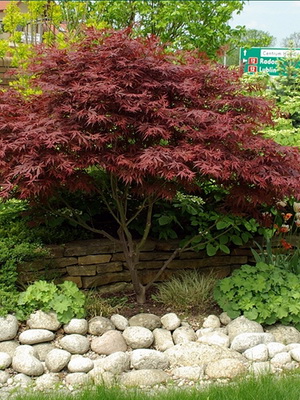
There are many beautiful unpretentious shrubs and trees for the garden, consistently decorative and practically maintenance-free throughout the season. For example, willows, maples, spirea, blisterfruits, deren, honeysuckle, elder, fruit trees and shrubs.

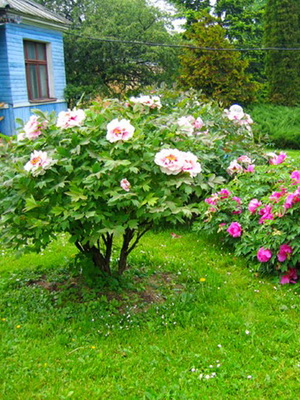
Single plantings, or tapeworms, are called a single (single!) Instance of a plant on a lawn. A prerequisite is the high decoration of the plant ( beautiful tree, hydrangeas, tree peony, etc.). Remember that there should not be several tapeworms on the lawn.
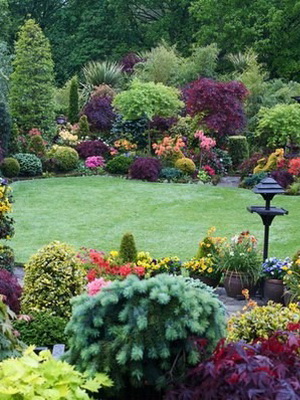
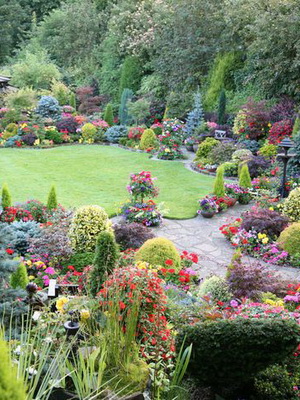
To reduce care, it is important to plan rationally for planting, plants should grow in compact groups, so they not only look more interesting, but also more technologically advanced in care. Be sure to mulch the planting, it gives them a more beautiful look, reduces the time for weeding, creates more comfortable living conditions for plants. Consider how to fix the border between the lawn and the compositions, the easiest way to do this is with a tile or curb stone, which will exclude the operation to trim the edge. Reduce garden maintenance time to a thinking gardener, if he sets such a goal.
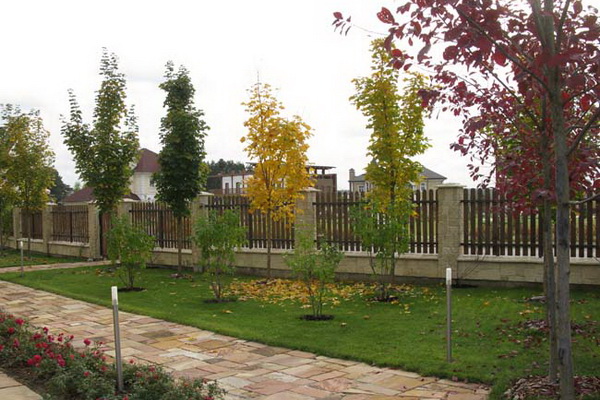
Landing design begins with the creation of a garden skeleton, which is organized by trees and large shrubs, and only after the foundation is made, can the site be decorated with flower gardens.
The plan is applied to the size of an adult tree or shrub, even if you plant a small seedling, thick planting is one of the most common mistakes.


Is it possible to have a harmonious garden for a lot of working people or not for a very young and healthy one? Of course. It is reasonable to plan it and plant suitable plants in the right places, then garden care will bring positive emotions, not to mention joy at the sight of beautiful and healthy shrubs and perennials.
Flowering and ornamental shrubs make your garden beautiful and noticeable throughout the year. Which ones should be planted? Choose, and you will always enjoy the aroma, flowers and extraordinary berries of these plants:
- potentilla shrub (Kuril tea, five-leaf)
- barberry
Potentilla shrub (Kuril tea, five leaf clover)
Potentilla shrub is a remarkable, unpretentious and winter-hardy plant. Blossoming: a large number of large flowers of various colors (yellow, white, pink, orange). There are terry forms. Flowering lasts from May to August, some varieties bloom until October.
The height of the bush is from 0.5-0.7m to 1.5m. The krone is dense, strongly branched, and has the shape of a ball. Good for cutting and shaping. Silverweed is light-requiring and drought-resistant. However, in the bright sun the flowers can fade. Potentilla is perfect for creating a hedge, flower garden and design of alpine slides. It goes well with conifers. It is often planted in the foreground of plants with a bare bottom.
Popular varieties:
- Goldstar -flowers are bright yellow to 5 cm, blooms from June to October
- Abbotswood - flowers are pure-white, simple with a diameter of 2.5 cm. Flowering: June - October
- Snowbird - white, terry
- Annette – low shrub 0,5m, orange flowers
- Pink Beauty -dark pink flowers up to 3 cm in diameter. Bloom from June to frost
- Pink Queen -pink flowers. Flowering from May to October
- Princess syn. Blink -pink flowers 2.5 cm
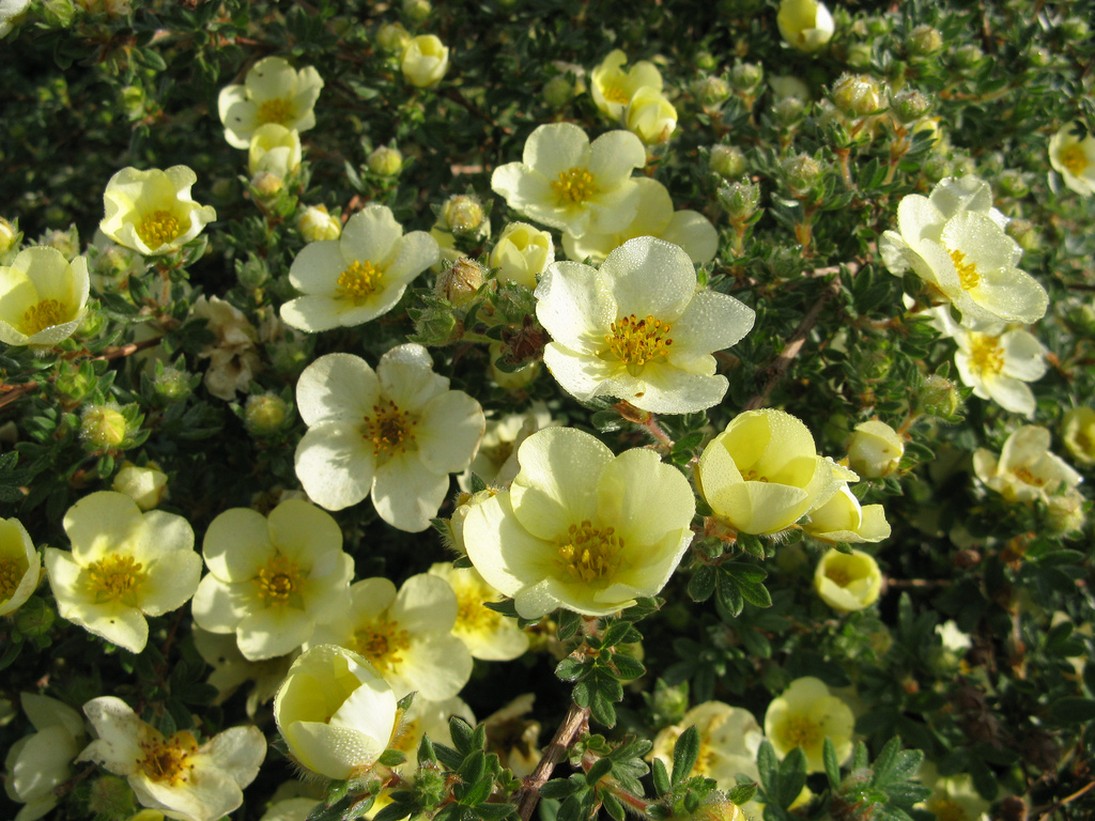
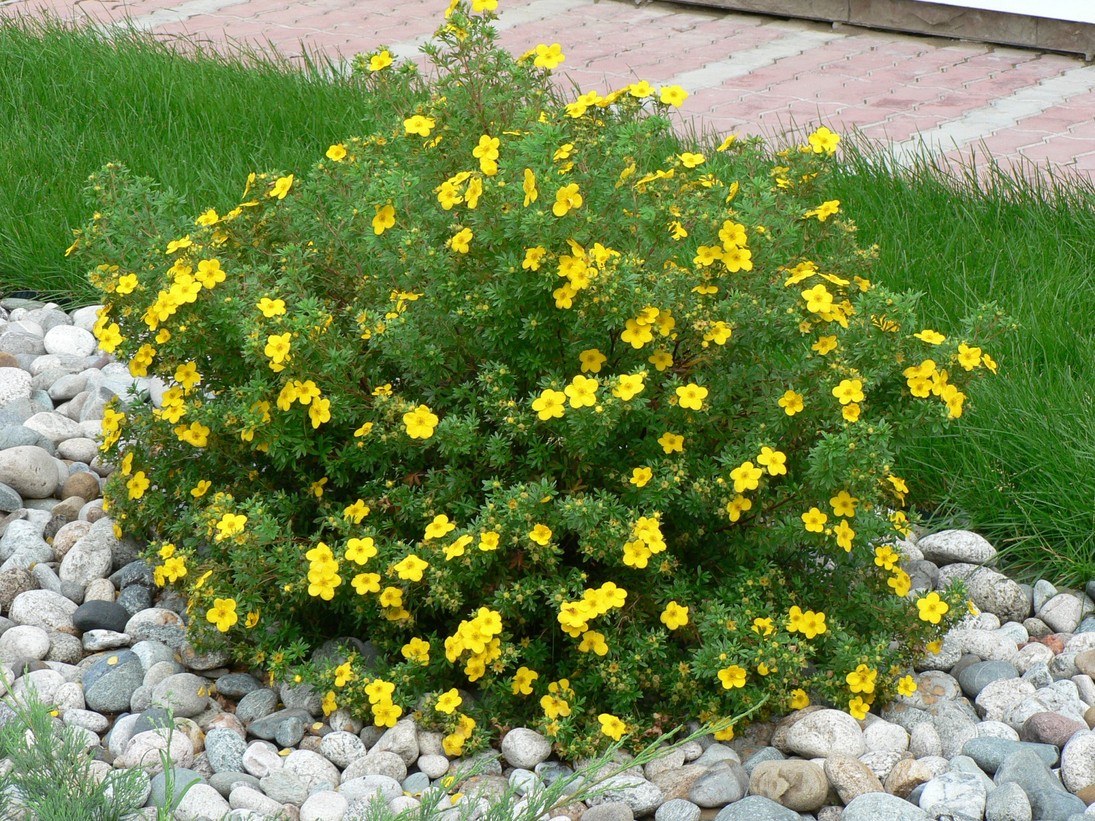
Japanese quince (henomeles)
Chaenomeles - deciduous or semi-evergreen, beautiful flowering shrub, slowly growing and rather prickly. Under favorable conditions, it can reach 3m in height and live up to 80 years. The Japanese quince is blooming with wonderful, large scarlet flowers in May. Quince perfectly feels on solar sites, plentifully blossoms and fructifies. The yellow fruits of chhenomeles look like small apples and are rich in vitamin C.
Chhenomeles can be planted both singly on the background of a lawn, and in a group of plants, in a rocky garden, used as a hedge. Low-growing species of Japanese quince suitable for decoration of the Alpine slide or border in the flower garden. A real tree ornament will be a chaenomeles tree. To do this, the cuttings of the Japanese quince are planted on a wild pear or rowan.
henomeles japanese(flowers are bright red, large up to 5 cm, height is up to 3 m)
henomeles Mauleya(flowers 2-3cm red-brown, up to 1m)
- Nivalis (red)
- Brilliant (bright red)
- Hollandia (salmon)
- Vesuvius (red)
- Pink Lady (pink)
quince beautiful Nakai(large red flowers, height up to 1m)
- Nakai Nivalis - white flowers
- Nakai Phylis Moore - salmon pink flowers
- Nakai Boule de Feu - blooms bright red
- Nakai Simonii - semi-double red
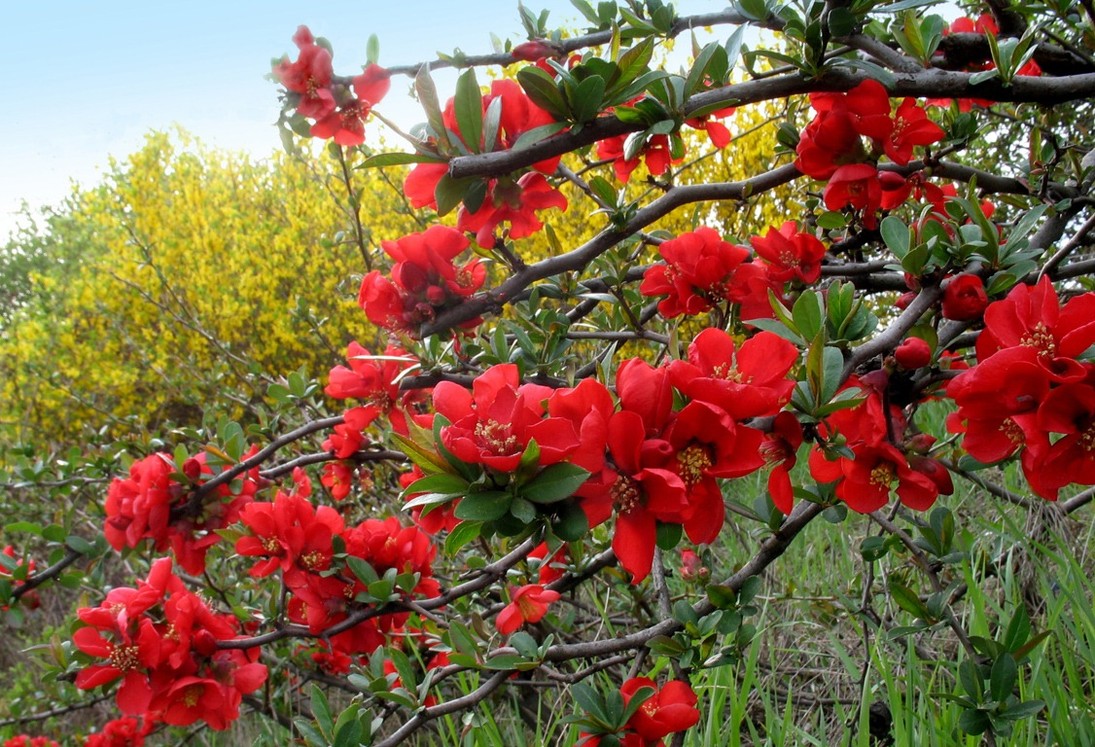
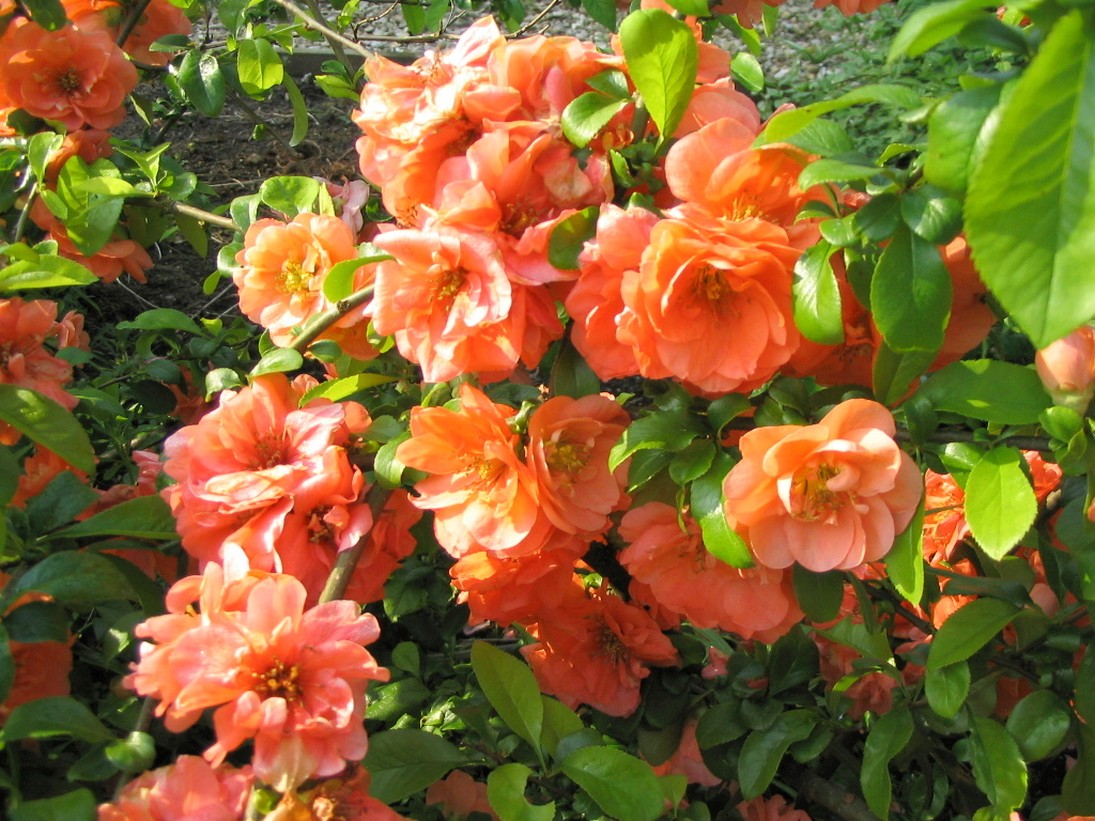

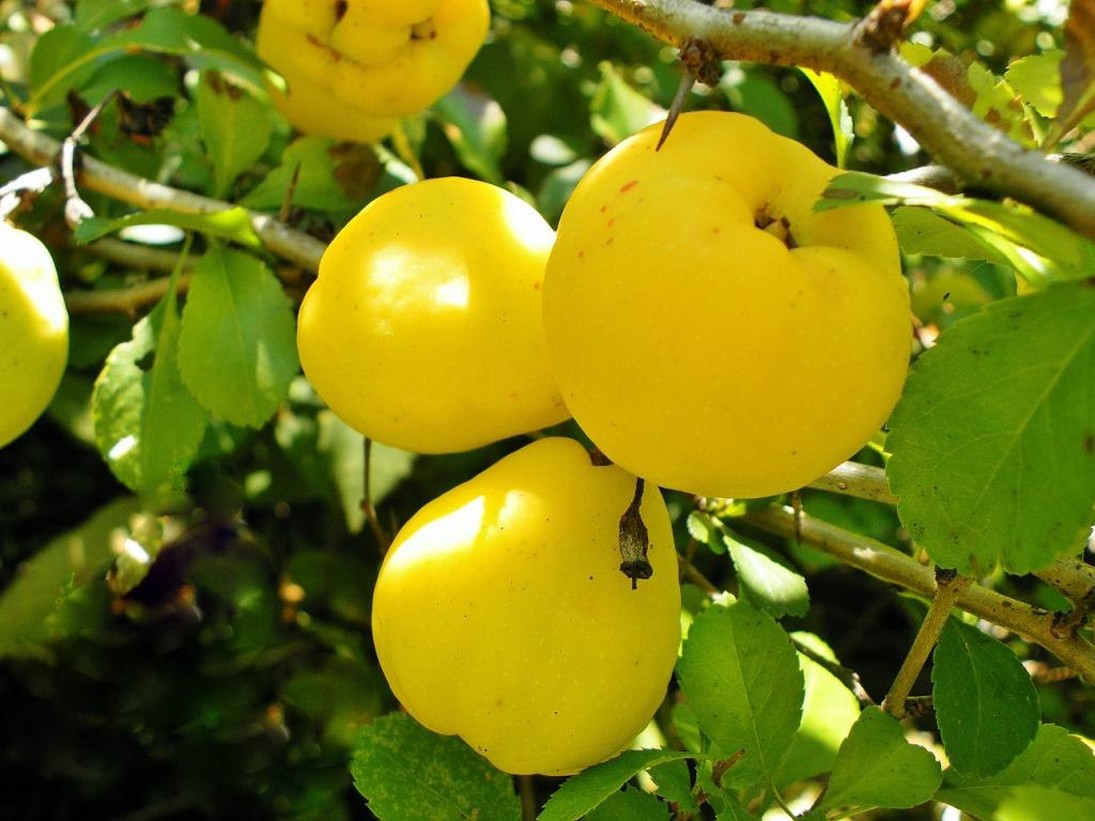
Coneberry
Caloniferous bladder has a beautiful, bright foliage of different shades from yellow-green to wine-red. The leaves are large, corrugated located on the spreading branches of the bladder stem. The crown of the bush is lush, spherical, easy to cut and shape.
The bubble player is ideal for hedges. It is interesting to see a hedge of several varieties with different leaf color and at the time of ripening bright red fruits.
- Dart "s Gold - height up to 1.5 meters. The young foliage is orange-yellow in color, becomes green in summer, acquires a yellow-bronze shade by autumn
- Luteus - height up to 3 meters. Yellow Leaf. In open areas - bright yellow, in the shade - yellow-green
- Red baron- reaches 1.5-2 meters in height. Differs in pink flowering and red berries.
- Coppertina - the height of the bush is 1.5–2.5 m, the foliage is orange in the spring, in the summer it gets red tones. The flowers are white, after the dissolution become pink
- Summer wine - bush up to 2 meters in height. Young bushes are characterized by beautiful red foliage of wine shade. Gradually the color changes to green.
- Diabolo - tall bush up to 3 meters high. The color of the foliage is purple-red, in the shade it acquires a green color with a slight magenta shade
- Aurea - bright yellow with orange tinged foliage.
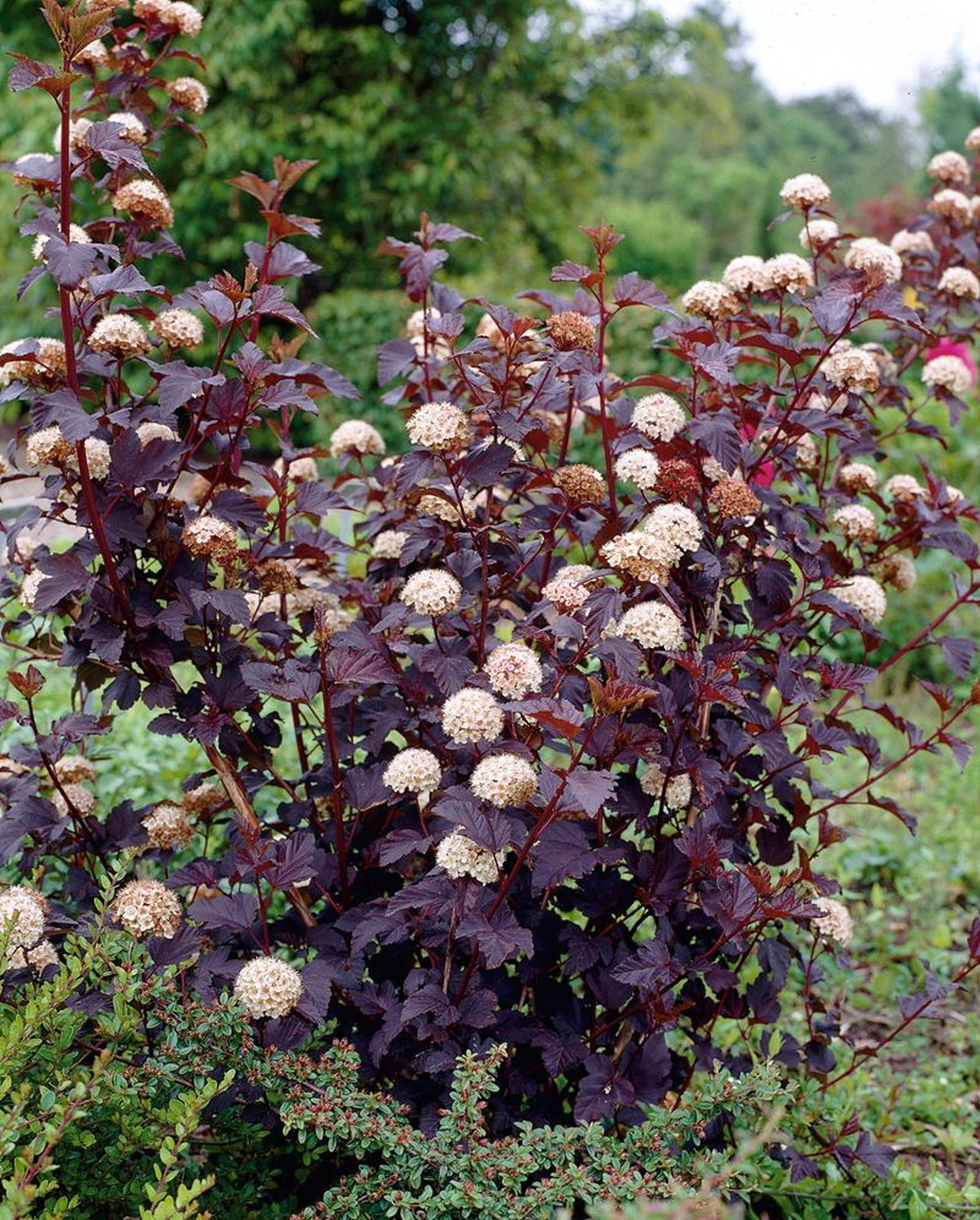
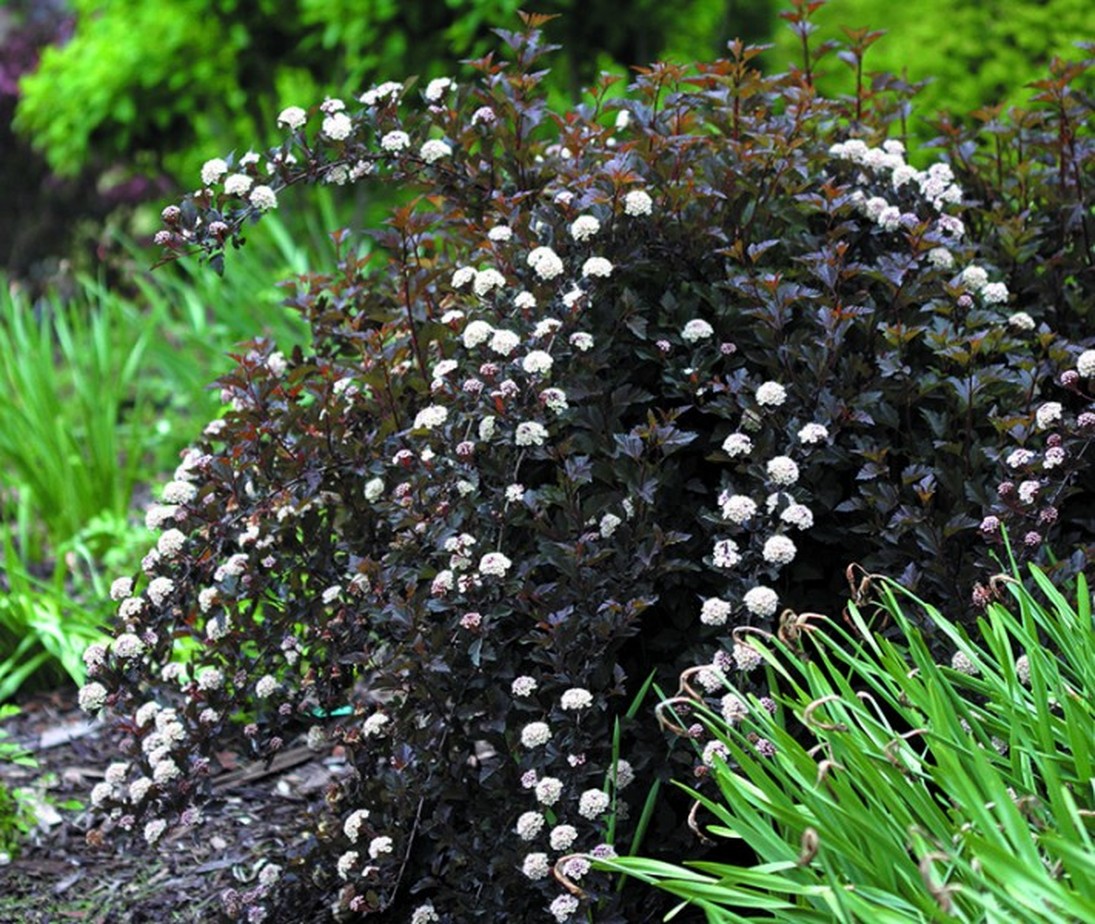
Euonymus
Unpretentious, easily tolerates air pollution, grows well in shade and partial shade. There are quite a few species of euonymus, so among them you can find both low shrubs and large trees with a fluffy crown. Euonymus blooms in May - June, but these flowers do not attract attention, but the most spectacular in this plant is, of course, foliage! In spring, it has the usual green color, but closer to the autumn it flashes with all sorts of colors: white, yellow, purple, purple, red, purple, orange.
The fruits of the euonymus are also interesting - bright boxes with long legs of bright, contrasting colors. They are not only the decoration of the autumn and winter gardens, but also attract birds there. Attention! The fruits of euonymus are poisonous!
Euonymus is used as ground cover shrubs, planted in flower arrangements, in paving windows, in rockeries and alpine slides. A good contrast combination of euonymus with coniferous plants: thujas, junipers, boxwoods.
Low, variegated shrub up to 0.5 meters in height. Valuable with bright colors of emerald foliage with white or golden yellow border.
- Vegetus
- Minimus
- Emerald gaiety
- Emerald gold
- SunSpot
- Sheridangold
- SilverQueen
japanese euonymus (Euonymus japonicus)
european Albus Euonymus
warty euonymus (Euonymus verrucosus) - reaches 1.5 meters, frost-resistant, very decorative
dwarf euonymus
euonymus Koopman - creeping species without stem with arched branches
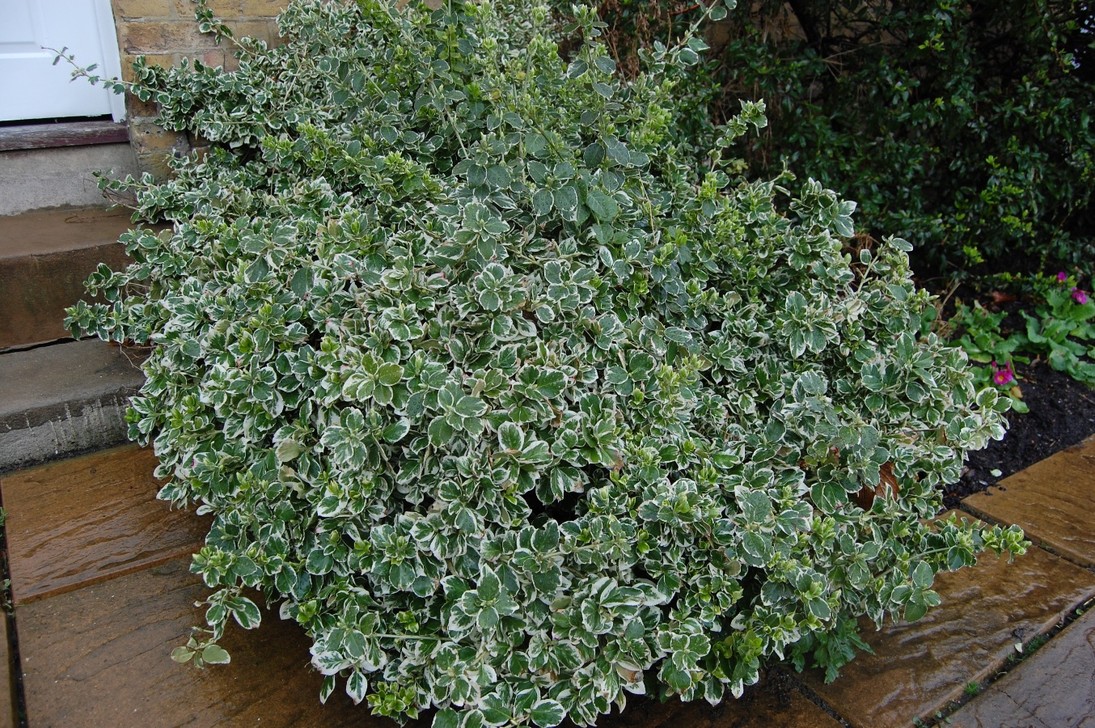
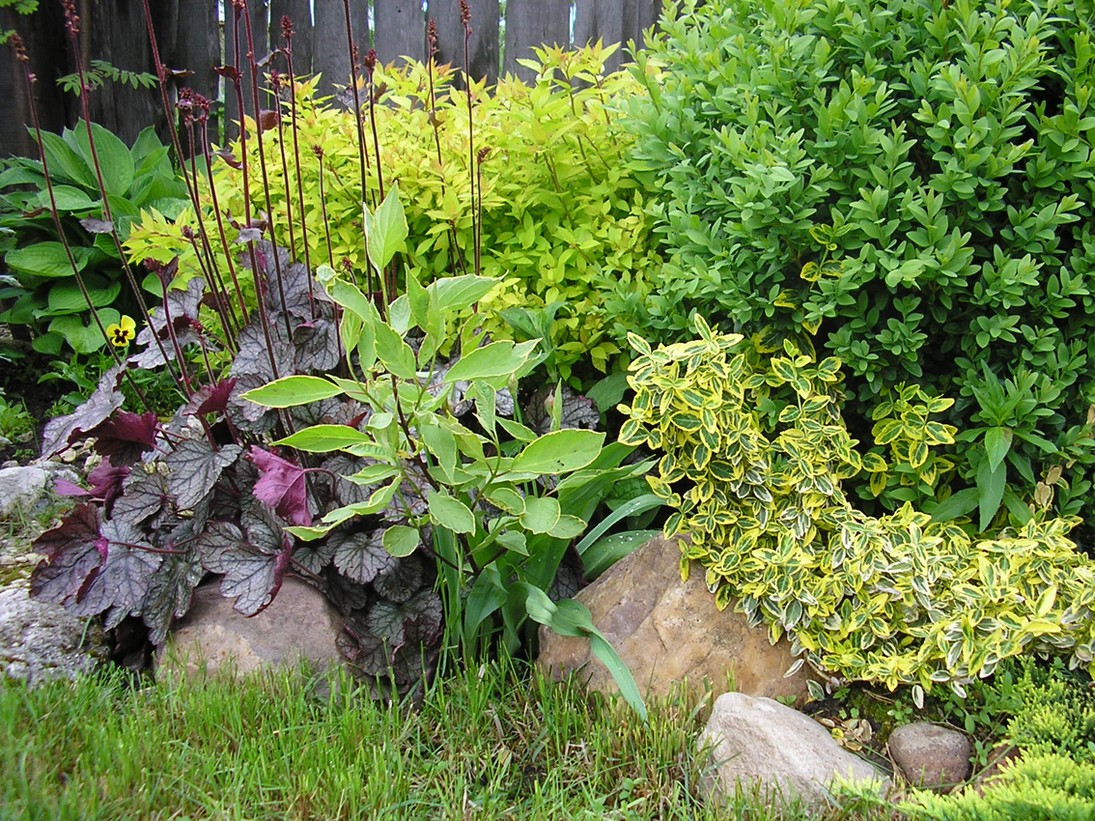
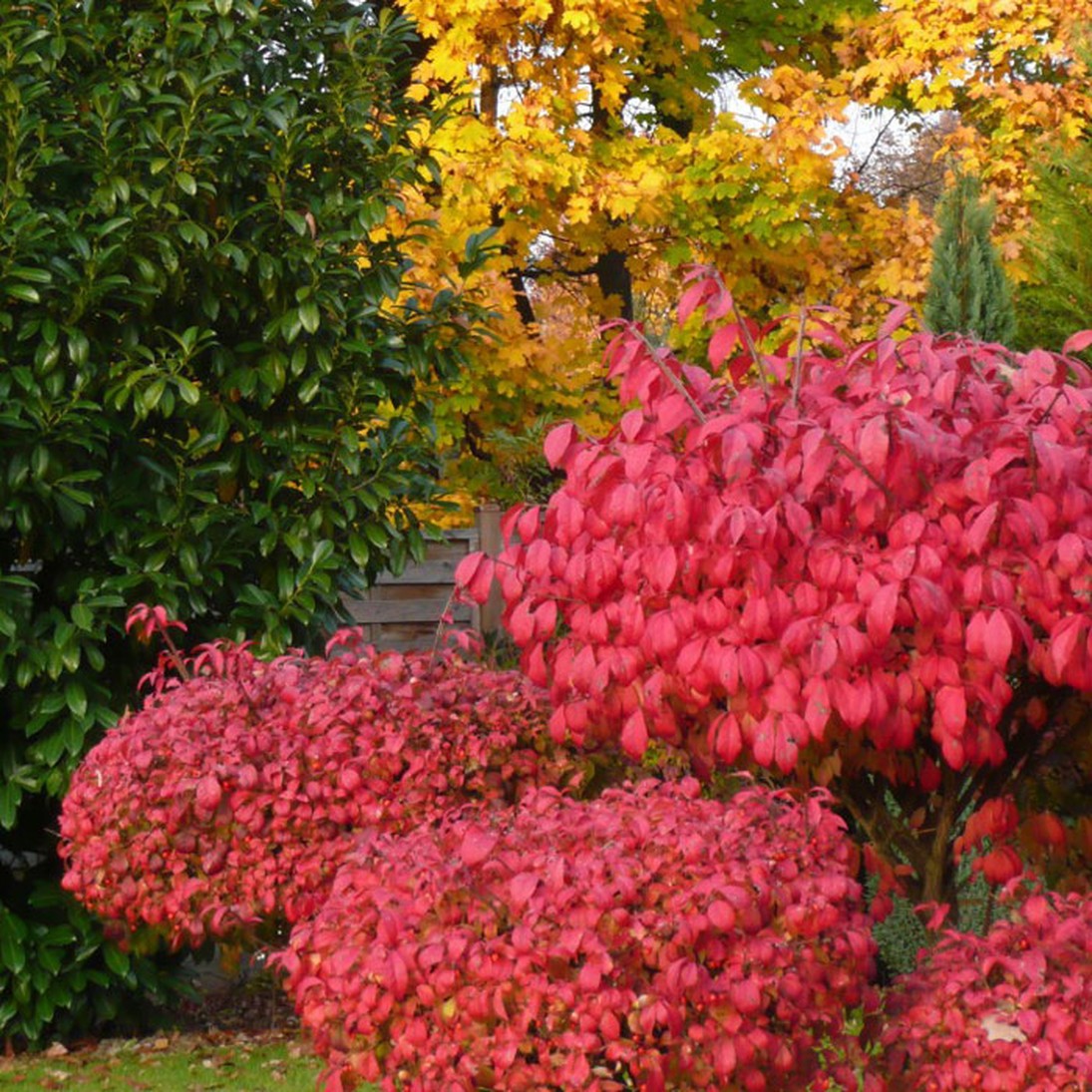
![]()
Barberry
Barberry is unpretentious, grows in the sun and in the shade, not picky about the fertility of the soil. This plant is frost and drought resistant. Barberry bush is decorative throughout the year: flowers, foliage, berries - all this looks very elegant and attractive. Barberry will decorate your garden with its extraordinary foliage and berries, which are in addition and very rich in vitamin C. Therefore, your garden will not only be beautiful and bright, but also tasty!
Barberry Thunberg (Berberis thunbergii):
- Atropurpurea nana
To date, there are few suburban areas on which at least one ornamental shrub would not adorn. For careless gardeners, they only cause problems, and in skillful hands they become a work of art and a unique decoration of the garden.
Before acquiring a shrub for the design of country design, we offer to familiarize yourself with a selection of the most interesting and original specimens. To plot after landing ornamental shrubs looked stylish and original, should be considered the purpose of each species.
The use of shrubs in the design of the site
Low-growing shrubs - versatile garden decoration. They can be a separate composition, serve as a hedge or border along the walkway or flower bed. Quite often they are used in the design of rabatok.
Larger shrubs can divide the area into zones, and hedge medium size will protect against sunlight.
Tall bushes are well suited for decorating unsightly walls, and for shading certain parts of the garden. They are good in single landings.
Coniferous and evergreen shrubs, zest of any site. Without them, the design will be unfinished. They can be made the center of the composition, landed on a large area as a living fence, their combination with a rose looks very original, but the downside is that not every rose will like this neighborhood.
The blossoming mini-trees will be a bright touch on a green background of a hedge and a dacha decoration. A single rose bush will help to dilute the monotony of the design, or to decorate the entrance area.

At first glance, everything seems to be simple: he chose the bushes he liked, marked the plot and planted them according to the marking. But such an approach can lead to the garden becoming impassable jungle.
The basis for decorating a garden is a thoughtful and skillful combination of plants. To achieve the effect, when choosing a place for shrubs, it is necessary to take into account a lot: the size of adult plants, the silhouette and volume that they form.
Together, shrubs look great in excellent growth form. A tandem mini-spruce with a Japanese maple, or decorative cherry with rhododendrons and cypress trees, will make a complete image.
Well combined plants with contrasting color of leaves. They complement each other and create a bright accent. One group can be mottled eoscleats, golden spruce and fan maple with purple leaves.
The ensemble will look more spectacular if it contains at least one shrub, characterized by bright flowering.
You should not build a composition in one row, they are usually seated on two or three lines, and the front should not overlap the bushes, standing behind more than 20 percent. You can place mini-trees and in the shape of a triangle.
In the formation of the composition must be considered and the compatibility of plants. So some species conifer shrubs quite aggressive towards their hardwood counterparts. They can suppress their growth and development, and even completely destroy.
Particular attention should be paid to the calculation of the distance between plantings, for this purpose, the height of the adult bush is multiplied by two.
The distance between the bushes depends on their size:
- Stunted (almonds, dwarf conifers) should be planted at a distance of 70-80 cm.
- Medium thick (henomeles, felt cherry, rhododendron, deicia) - at a distance of 1.2-1.5 m.
- Tall (spirea, lilac, forsythia, viburnum, hawthorn) - the distance should be at least 2 m.
The most beautiful garden shrubs
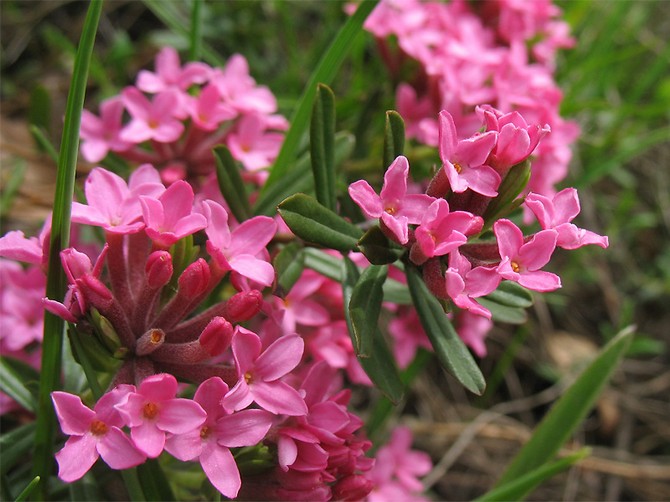
At the end of April, when there is still snow in some places in shaded places, a beautiful daphne blooms (Daphne mezereum). Her inflorescences look like lilacs, a bush about a meter high is generously covered with delicate pink-lilac flowers. At the end of flowering, gently green oblong leaves appear, and closer to autumn bright red or orange berries appear. But you can not try them, they are poisonous enough, not without reason the people call this plant a wolfberry.
Daphne likes abundant watering and prefers partial shade, feels good in the shade of a rather thin tree crown.
Forsythia

Golden rain, or forsythia begins to bloom in early spring and flaunts sunny yellow buds for three weeks, sometimes longer. In autumn, the leaves become golden or purple-bloody, which looks very elegant and festive.
Solar glades, protected from gusts of wind, will be for him the best place of growth.
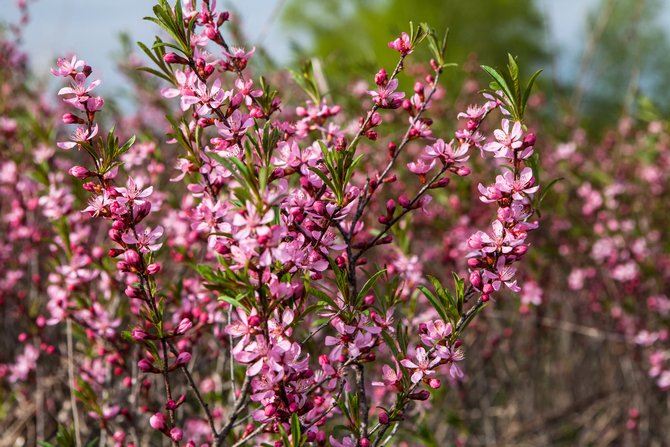
A small bush, 100-150 cm high, one of the first opens the flowering season. The shape of the crown is spherical in shape, the branches are densely covered with oblong leaves. The wonderful aroma of pink flowers can not leave anyone indifferent. Its fruits are oval and covered with a soft down. After the leaf fall, fluffy balls flaunt on the branches. Can be propagated by seeds.
Almond is quite undemanding in care, loves the sun and is well tolerated by a lack of moisture. Abundant and frequent watering can destroy bauber.
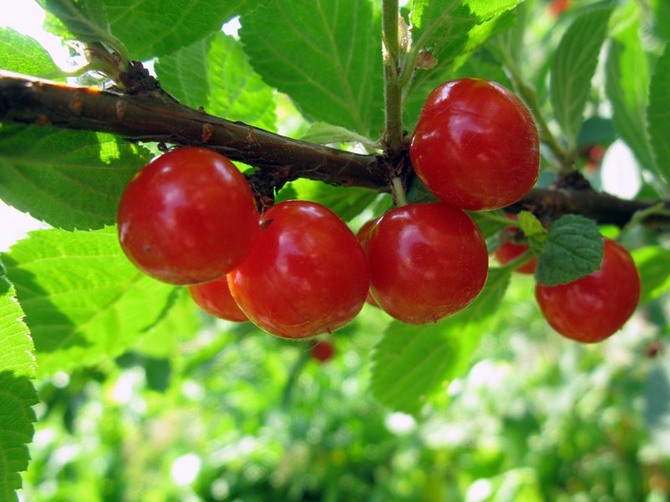
This crop is popular with gardeners from Kaliningrad to Vladivostok, for its unsightly temper and a good stable crop with a fairly compact size. Blooms pale pink flowers, quite abundant. Received its name for the leaves and shoots, covered with a light down like felt.
Loves a rich organic soil and open well-lit spaces.
![]()
Perhaps the most elegant representative of ornamental shrubs. Immediately after gardening, it produces purple buds that turn into large bright flowers. The fruits are golden, similar to small apples and contain many vitamins.
The Japanese quince is unpretentious to the composition of the soil, lives well in the shade of the trees, is ideal as a living non-trimmed hedge.
Mahonia
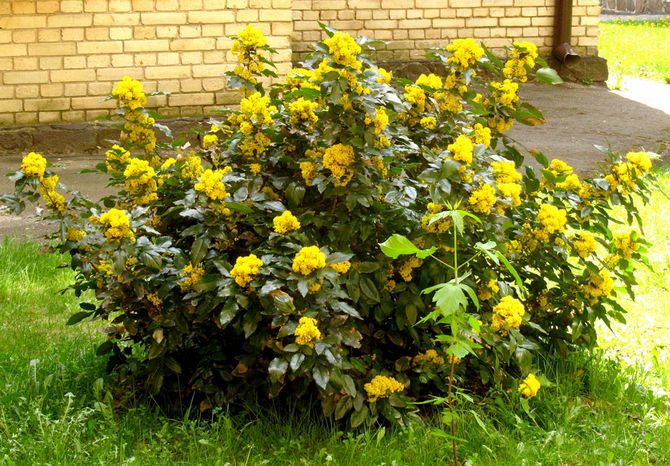
Evergreen mahonia is popular as a hedge, capable of sprawling independently from root shoots. This specimen blooms at the very end of spring and pleases with sunny inflorescences until mid-June. The rest of the year admires clusters of blueberry-colored berries and bright bronze foliage.
The mahonia that does not require much attention grows successfully in sunny glades, under the crown of a tree and in thick shadow. Does not tolerate stagnant water, this can lead to rotting of the roots.
Lilac

Lilac won the hearts of gardeners for beautiful paniculate inflorescences with small fragrant flowers. Varietal lilac has several color options. This shrub needs regular pruning, which helps to maintain the desired shape of the plant and provides more abundant flowering. It looks good combination of several multi-colored varieties.
Drought-resistant, but picky about the lack of coverage. The soil prefers loamy, rich in organic matter and minerals.
Viburnum
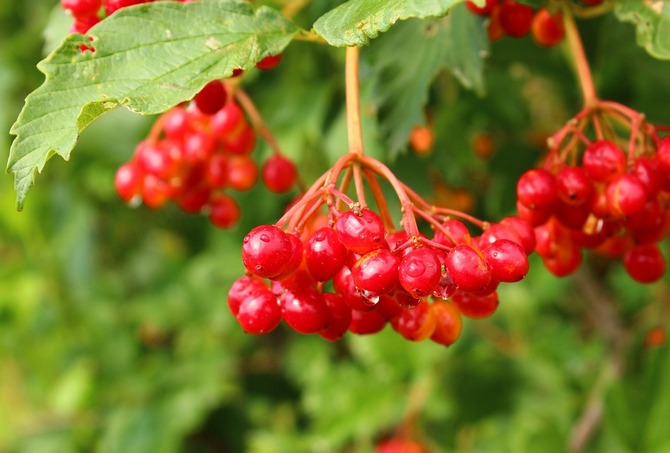
Perhaps the most popular tree in Russian gardens. In the people she received the name "wedding tree". It is believed that this is a strong amulet. It blooms from May to July, with white flowers with a honey smell. By autumn, the fruits are poured with red juice and remain on the bush all winter, being food for birds.
Spirea

There are many varieties of spirea, which have significant differences. What they have in common is that they all grow very actively. Therefore, in the third or fourth year of planting should cut the bush, leaving 20-30 centimeters.
Flowers can be of different colors, from white hemispherical inflorescences, to pink and red.
Plant spiraeus alone, only with a few bushes. According to the laws landscape design, it should dominate the other components of the group.
Chubushnik

Chubushnik is very similar to jasmine, but is a representative of another family. The abundance of white flowers on the branches and unobtrusive aroma make it an irreplaceable decoration on household plot. It is very undemanding to the landing site, but on the sunny side on nutritious and loose soils it will bloom longer and longer.
Deytion
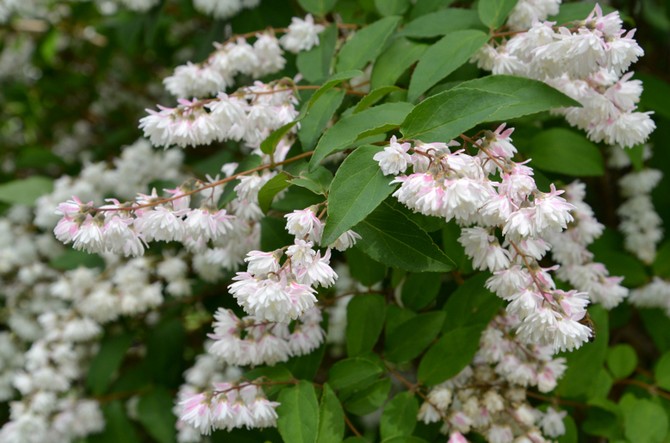
The shrub has a long flowering and a large color palette. Flowers are pink, white, purple and purple, they do not smell.
With a lack of light and poor soils, they get sick. The choice of ornamental shrubs is unlimited, but they all need regular neat cutting, otherwise the site will look untidy and untidy.


